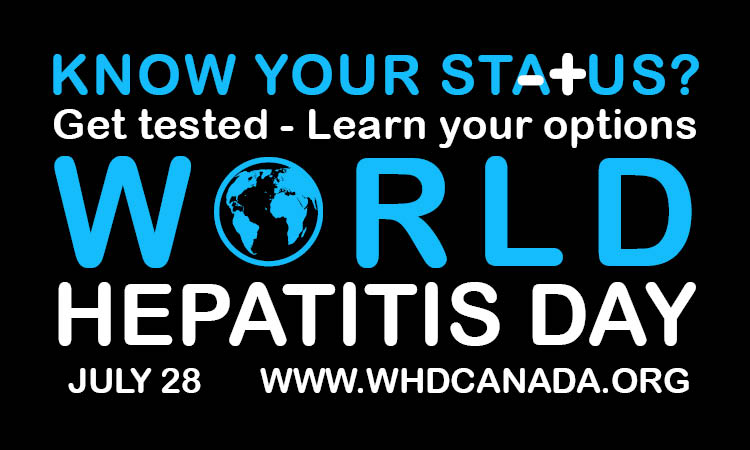On July 28, the World Health Organization will mark World Hepatitis Day to raise awareness of worldwide efforts towards the elimination of viral hepatitis by 2030. With 400 million people living with hepatitis B or C worldwide, this year’s campaign theme in Canada is “Know your Status? Get Tested – Learn Your Options”. While the general population in Canada is at lower risk of contracting hepatitis compared to people living in other parts of the world, it is a serious health concern that disproportionately affects homeless people worldwide
Hepatitis is one of a number of infectious diseases caused by viruses or bacteria that are spread between people or from animals to people. Most infectious diseases cause mild short-term effects, while others cause serious long-term effects which could lead to life-threatening complications. Researchers on homelessness and infectious disease often focus their investigation on hepatitis A, B and C, tuberculosis (TB), HIV/AIDS and a range of sexually transmitted infections.
Homelessness has an impact on the spread, severity and treatment of infectious diseases. Because of their compromised immune system due to the inability to maintain personal hygiene and adequate nutrition, people who are homeless are more vulnerable to illness than the general population. Having to stay in overcrowded and sometimes poorly ventilated spaces with other vulnerable people also raises the likelihood of spreading infectious diseases. In addition, transitioning between prison and homelessness, engaging in sex work and using intravenous drugs also increases the risk for infectious diseases to spread.
One study found that hepatitis C rates among homeless people in Toronto are 29 times higher than in the rest of the Canadian population. 23% of the homeless people surveyed in the study reported having hepatitis C, compared to less than 1% of the general population. Researchers believe that the percentage is actually much higher as people tend not to experience symptoms for many years and/or they fail to be diagnosed.
An American study looking at the links between affordable housing, homelessness and HIV/AIDS reported that people experiencing homelessness have HIV infection rates up to 16 times higher than those living in stable homes. For people living with HIV or AIDS, having a stable home decreased emergency room visits by 35% and slashed hospitalization by 57%, resulting in reduced health care costs.
In Canada, 70% of new cases of active TB reported every year occur among foreign-born individuals and 20% among Indigenous Peoples. Although active TB rates in Canada are among the lowest in the world, it has remained consistent for the last 30 years. In Toronto, a longitudinal study led by St. Michael’s Hospital found that one in five homeless people with active TB die within a year of their diagnosis. Homelessness not only delays treatment but also results in treatment complications for patients.
Treatment of infectious diseases among people who are homeless is complicated by the fact that many homeless people face barriers in accessing health services, lack funds for medication, and may not easily be able to follow treatment schedules. Further challenges include not having ID or a health card, feelings of stigmatization and/or the lack of transportation to health visits. The reality is that people experiencing homelessness have few options but to continue using emergency services or staying in unhealthy environments, meaning that even if they have access to treatment, they are still at high risk of contracting other infectious diseases.
In England, the National Institute for Health and Clinical Excellence recommends the following guidelines to better treat, control and decrease the cases of TB, hepatitis C, and HIV among the homeless population and those at-risk:
- Simultaneous screenings for TB, hepatitis C, and HIV
- Transportation and housing supports as well as ensuring adequate nutrition
- Active case-finding screenings (should not be restricted to symptomatic patients)
- Needle exchange programmes
- Free condom distributions
- Community health centres in large cities
- Better access to health care
While these are important recommendations, addressing the inequalities experienced by homeless people and their impact on social determinants of health is also a critical component of a wider public health strategy.
In 2014, the Government of Canada announced the Tuberculosis Prevention and Control in Canada: A Federal Framework for Action. The Framework for Action addresses the high rates of TB among Indigenous communities and foreign-born populations with high incidence of TB. It also deals with the underlying risk factors related to social determinants of health. While it may be too early to determine the outcomes of the Framework, the federal government plays a key role in building best practices in collaboration with provincial and territorial governments and other stakeholders in the global response to preventing and controlling TB.
With better access to quality health care, including harm reduction programs and further support services, infectious diseases can be successfully managed, treated and prevented. To join the conservations on social media and raise awareness on hepatitis, use the hashtags #worldhepday, #WHDCanada2016, #LightsUp4Hep, and #Nohep. You can also visit the Canadian Society for International Health’s website to access their campaign toolkit including posters, template letters to politicians, logos and further information for those organizing an event.
Photo Credit: Canadian Society for International Health, World Hepatitis Day 2016


